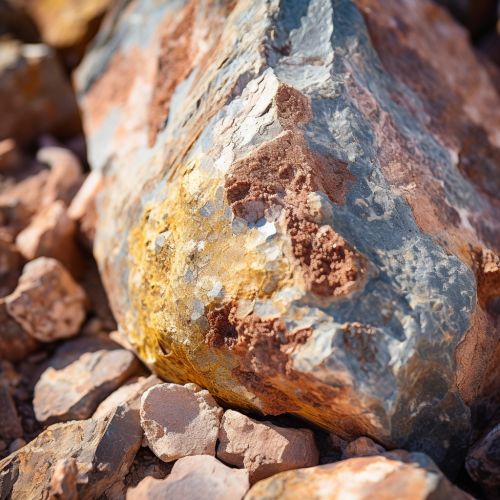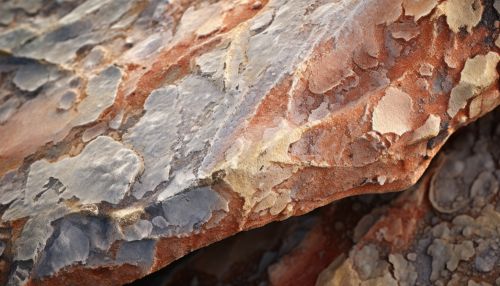Rhyolite
Introduction
Rhyolite is a type of igneous rock, characterized by its high silica content and fine-grained texture. It is the extrusive equivalent to granite, meaning it forms from lava that has the same composition as granite, but cools and solidifies on the Earth's surface. Rhyolite is typically light in color, ranging from white to gray to pink, and is often glassy or porphyritic in appearance.


Formation
Rhyolite forms from high-silica lava that cools and solidifies on the Earth's surface. This process is known as extrusion, and it results in the formation of volcanic rocks. The high silica content of the lava makes it very viscous, or thick and slow-moving. This viscosity prevents gas bubbles from escaping, leading to the formation of a rock with a very fine-grained, often glassy texture.
The formation of rhyolite is often associated with explosive volcanic eruptions, due to the high gas content and viscosity of the lava. These eruptions can produce large volumes of pyroclastic material, including ash, pumice, and volcanic bombs. Rhyolite lava flows are less common, but can form thick, slow-moving flows that insulate the lava and allow it to cool slowly, resulting in the formation of large crystals.
Characteristics
Rhyolite is characterized by its high silica content, typically between 68% and 77%. This high silica content gives the rock its light color and glassy texture. Rhyolite is also often porphyritic, meaning it contains larger crystals, known as phenocrysts, in a fine-grained groundmass. These phenocrysts can include quartz, feldspar, and biotite, among other minerals.
The density of rhyolite is typically between 2.4 and 2.6 grams per cubic centimeter, making it less dense than many other types of igneous rock. This is due to the high silica content and the presence of gas bubbles in the rock.
Distribution and Uses
Rhyolite is found in volcanic regions around the world, including in the United States, Iceland, New Zealand, and Italy. It is often associated with large, explosive volcanic eruptions, and can be found in the deposits of these eruptions.
Rhyolite has been used by humans for thousands of years, particularly in regions where it is abundant. It was used by prehistoric peoples to make tools and weapons, due to its ability to be finely chipped into sharp edges. Today, rhyolite is used in the construction industry, particularly for road and building construction. It is also used in the production of decorative items, such as jewelry and ornamental stones.
